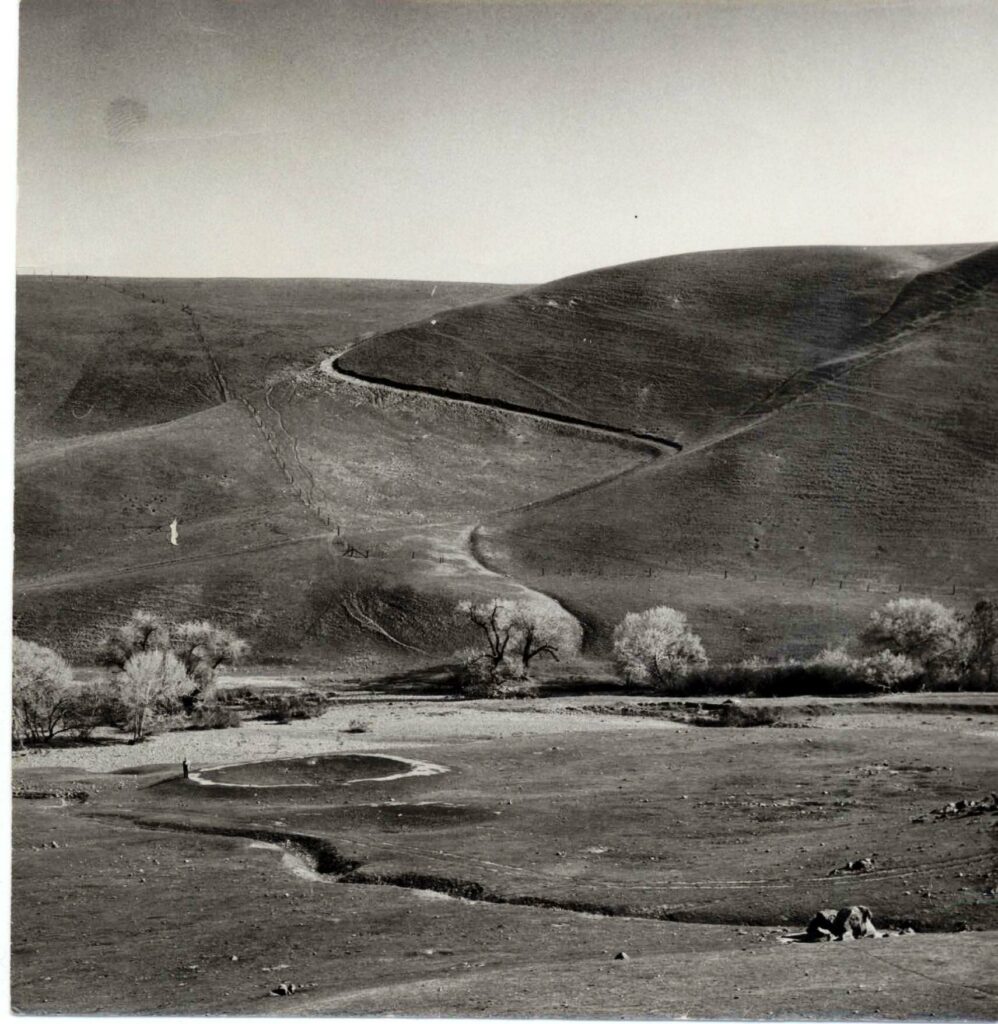
Before Los Banos had its housing boom, before the railroad, before Henry Miller, and before the father who named the creek Los Banos, there were the Yokuts. Yokuts or Yokoch means people and is never used in the singular form. The Yokuts were a massive culture spanning a vast swath of the great Central Valley. California was home to so many indigenous groups, it was considered one of the most diverse regions on the continent in terms of native folk.
To set the scene, their Los Banos was far different from our own. You could see the Diablo Range and the Sierra Nevada’s without smog clouding the view most days. Trees were few and lacked the straight wide trunks necessary for wood structures. Pacheco Pass went right along the now reservoir’s floor. The heat though remained the same, no one in history could escape the Central Valley oven. The San Joaquin was a strong river, winding on the valley floor, creating vast Wetlands of Tule(tu: li) reeds on its meandering banks. Los Banos was but a small unnamed creek meandering its way as a tributary to the San Joaquin river.
Today’s economic advantage, being a crossroads at the eastern mouth of the Pacheco pass, was a double-edged sword that makes it hard to study them in the modern era. The close access to the coastal mission system meant many indigenous folks were brought into the missions or driven off their lands by ranchos without recording their cultural knowledge. Their language and culture had taken a massive hit- by the time people were interested in recording their existence in detail, we had lost all but a few primary sources. Thanks to the diligent work of researchers like Frank F. Latta & Dr. A. L. Kroeber in the 20th century we have the following knowledge.
Stretching from Bakersfield in the South to the San Joaquin Delta in the North-the Yokuts were wide-reaching people, split into smaller “True Tribes”. Little is known about the Kah-watch-wah ‘true tribe’ who lived near the Los Banos area specifically, or their village north of modern Los Banos; Katomah. In sharp contrast, to the modern agricultural dominance of the region, the Yokuts didn’t farm or partake in agriculture beyond very basic practices. They were seasonal Hunter-gatherers, gathering their main staple, acorns alongside berries, and roots as well as hunting deer, small mammals, birds, and fishing. The seeds would be ground up into flour. There was far more than enough for their populations to feed from in the wild.
The Yokuts adorned themselves with seeds and feather jewelry, cloaks, and headbands, some had marine shell necklaces, traded to them from the natives of the coast. They lived within 25-40 ft wide light round to oval structures, roofed by tule reeds woven into mats, and floored by hard-packed dirt dug into the ground. Community structures could be up to and larger than 80ft in diameter. Weaving the tule reeds was perhaps a great art of theirs. Stone & obsidian were the material most available for most tools, including their ever-present mortars and pestles.
Yokuts traveled by rafts crafted through lashing together bundles of Tule and long worn and straight paths along the valley. Trade provided by this travel included the importing of baskets, bows, and arrows from the northern Miwok, and from the coast, they imported mussels and abalone shells. Some of their surprising exports were dog pups, and pigments- a very valuable resource among Californian natives. Their unit of currency was lengths of beads, known as Choks, and measured by hand.
Their society wasn’t well documented, but it could be inferred from other native groups that Yokuts were family oriented and patrilineal. The previously mentioned ‘true tribes’ were governed by Tribal Chiefs, with sub-chiefs in every permanent village. ‘True tribes ‘comprised roughly 300 members, concrete numbers were not documented. The boundaries of these tribes were rough and fluid, and only general areas of territory can be ascertained along natural barriers.
Their numbers dwindled during the Spanish and Mexican periods in California. Life pre-discovery was in sharp contrast to the new arbitrary work hours of the missions. Those born within the mission system slowly lost their cultural and linguistic ties to their fellow Yokuts. Attempts to found missions in the Central Valley bore little fruit, but it was in this process Fr. Felipe Arroyo de la Cuesta would name Los Banos. Lacking the necessary construction materials- the Central Valley was spared of the mission system and the less coastally connected east side acted as a haven for fleeing natives to escape Spanish soldiers.
In 1833, there was a ‘Great Pestilence’ of Malaria, wiping out many West-side Yokuts villages in one year. Stories from the few survivors paint a grim picture of survivors not being able to bury all the dead. Mass burial sites from this period are dotted across a large swath of the west valley.
Over time with numbers permanently and drastically stunted they stood no chance against the gold miners. In 1846 there were roughly only 14,000 people in California, not including natives, in California by 1853 that number had skyrocketed to 300,000. The rapid extensive overpopulation of hopeful miners drove the surviving native populations off their land at best and at worst were murdered. While a few survivors of the period were able to tell their story, and some ‘true tribes’ were able to survive today like the Chuckchansi and Tachi, West-side Yokuts were not so fortunate.
These were the people before us, while not many survive us in the present day, their story is our story.
Sources:
Hayes, Derek. Historical Atlas of California: With Original Maps. University of California Press, 2007.
Latta, Frank F. Handbook of Yokuts Indians. Bear State Books, 1978.
Smith, Wallace, and William Secrest. Garden of the Sun: A History of the San Joaquin Valley, 1772-1939. 2nd ed., Craven Street Books, 2004.
Wallace, William J. (1978). “Northern Valley Yokuts.” In Handbook of North American Indians. Vol. 8, California, edited by Robert F. Heizer, 462-470.
“Welcome to Tachi Yokut.” Tachi Yokut Tribe, https://www.tachi-yokut-nsn.gov/.


